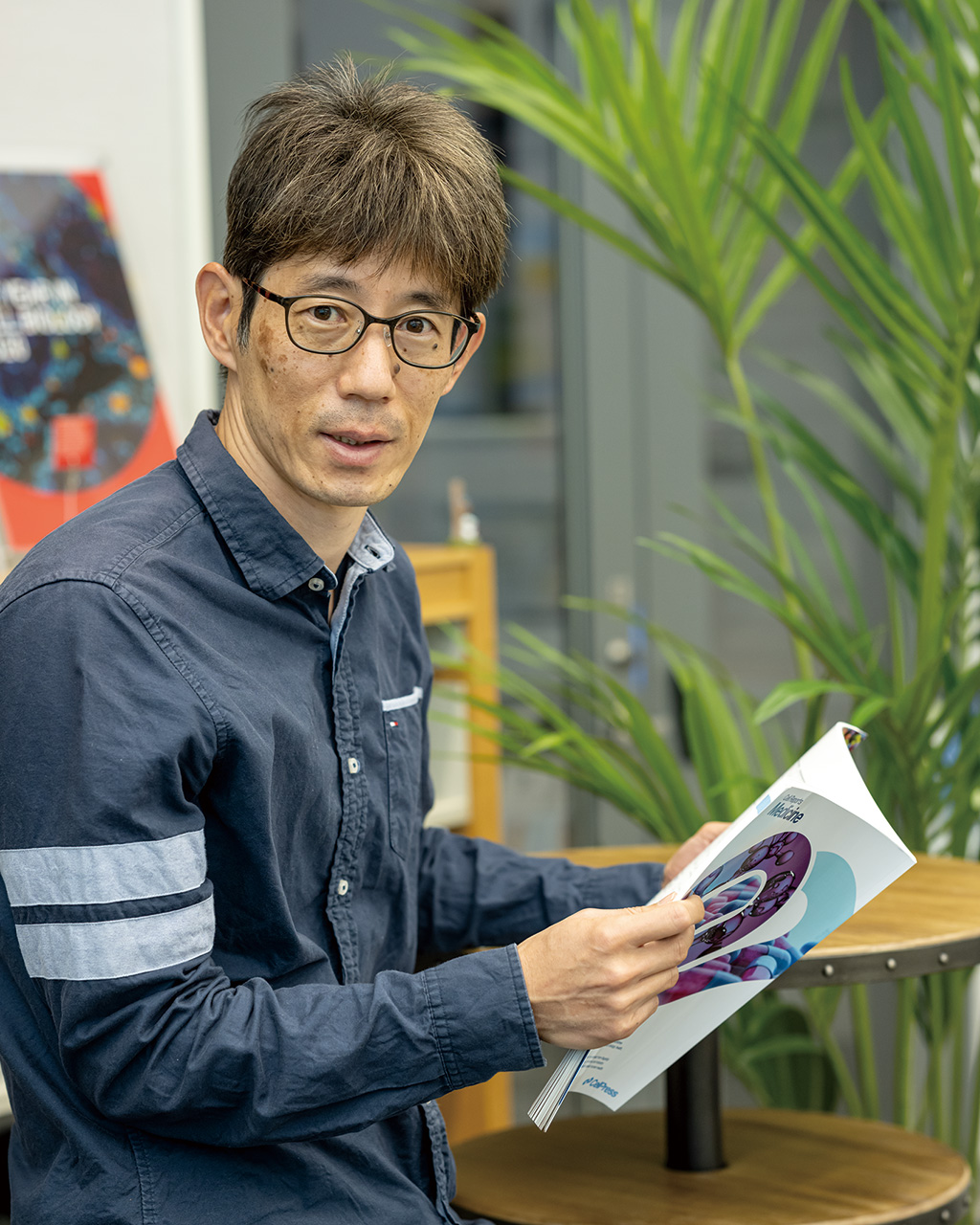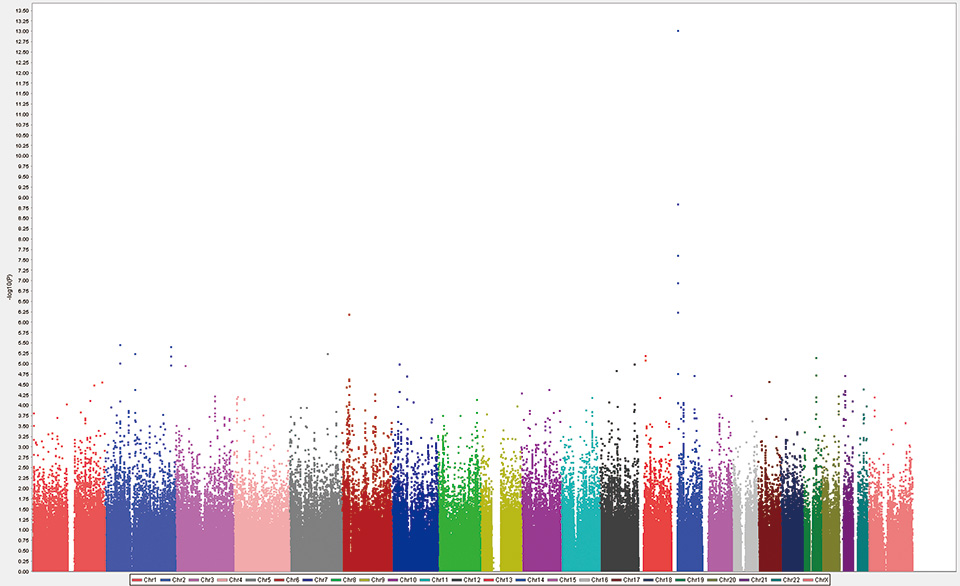Meet our scientists!
 BackTopics Page
BackTopics Page

Taku
Miyagawa
Taku
Miyagawa
Sleep is an essential part of our lives, but even now, we only have a limited understanding of why sleep is so important. What causes us to feel tired and fall asleep? Why do we feel so refreshed after waking? One way to understand sleep better is to identify biological pathways regulating sleep. Traditionally geneticists study mutants defective in a biological process and compare them to normal animals to identify mutations in genes important for that biological process. For example, narcolepsy type 1 is a neurological disease associated with defects in regulation of sleep-wake cycles. Narcolepsy has been shown to be caused by a defect in production of orexin-A, a neuropeptide that excites various brain nuclei to increase an animal’s wakefulness. However, in contrast to narcolepsy, the causes of a different sleep disorder, idiopathic hypersomnia (IH), have been completely unknown. While narcolepsy patients tend to sleep for normal amounts of time and wake up refreshed after sleeping, IH patients suffer intolerable sleepiness in the daytime and tend to sleep much longer than normal. Taku Miyagawa, a staff scientist in the Sleep Disorders Project led by Makoto Honda, is interested in understanding the causes of IH. Interestingly, he found that a rare missense variant in the cleavage site of prepro-orexin is associated with IH. Thus, alterations in orexin signaling can be associated with two different sleep disorders, narcolepsy and IH. This work was published in a paper, “A rare genetic variant in the cleavage site of prepro-orexin is associated with idiopathic hypersomnia,” (npj Genom.Med. 7, 29 (2022)). We spoke to him about his work.
How did you become interested in science?
When I was a child, I liked history rather than science. But in high school, most students picked physics or chemistry as their science class, so the biology class I picked was very small and comfortable. My high school biology teacher was fantastic and gave fascinating lectures which piqued my interest in human genetics, medicine, and disease. I thought about a career in medicine, but my mother, who was a nurse, discouraged me from becoming a doctor, so instead, I pursued my interest in genetic research.
Why did you start studying idiopathic hypersomnia (IH)?
I did my graduate work at Tokyo University, Department of Human Genetics, where I became interested in sleep disorders. Sleep is a big mystery. We spend roughly one-third of our lives sleeping, but no one really knows why. I performed genome-wide association studies to identify narcolepsy-associated genes and I fortunately found one gene. However, many groups are studying narcolepsy, so I decided to change my target gene to IH, which few people are studying. Although narcolepsy and IH are both sleep disorders, they are different. Narcolepsy patients actually sleep for normal amounts of time. So, they might sleep for a total of about 7 hours per day and they wake up refreshed. On the other hand, IH patients sleep much more than normal, over 10 hours per day, but they’re always tired. So the questions we have for each disease are different. For narcolepsy, we want to know why patients suddenly fall asleep. For IH, we want to know why patients have trouble sleeping even though they are tired, and why sleep doesn’t cause patients to become refreshed. In many respects, IH may be a much more severe disease compared to narcolepsy.
Could you explain your 2022 Genomic Medicine paper?
In this paper, we found that orexin signaling is involved in IH. Reductions in orexin signaling are well-known to cause narcolepsy; narcolepsy in dogs can be caused by mutations in an orexin receptor, and narcolepsy in humans is caused by the death of orexin-producing cells. On the other hand, IH was thought to be caused by a different mechanism because amounts of orexin in the cerebrospinal fluid of IH patients are relatively normal, and because the two diseases have very different symptoms. However, when we sequenced the orexin and orexin receptor genes in IH patients and controls, we found that the frequency of a rare missense variant in the prepro-orexin gene was significantly higher in IH patients. Mature orexin is produced by cleavage of a longer prepro-orexin peptide, and we found that the cleavage efficiency of the rare variant was lower than that of wild-type. Further, we found that activation of orexin receptors by uncleaved prepro-orexin is decreased relative to activation by mature orexin peptides. Overall, our results demonstrate that at least some types of IH are associated with decreased orexin signaling.
Narcolepsy and IH have very different phenotypes. Why do you think two very different diseases can result from abnormalities in the same sleep pathway?
I think IH results from a partial reduction in orexin signaling, while narcolepsy is caused by a complete or almost complete reduction. 100% reductions lead to narcolepsy, while lesser 50% reductions may be associated with IH.
Do you think treating IH patients with orexin antagonists could make them more like narcolepsy patients and resolve their tiredness?
That’s an interesting idea. I know that many pharmaceutical companies are trying the opposite idea. They are trying to produce orexin agonists that will increase wakefulness.
How do you plan to continue your experiments in the future?
In our previous paper, we looked for mutations and variants in the orexin pathway. In the future, I’d like to look for completely novel mutations associated with IH using genome-wide studies. From this, we should be able to identify new pathways involved in sleep disorders.

Manhattan plot of a genome-wide association study of narcolepsy.
Interviewed by Jun Horiuch